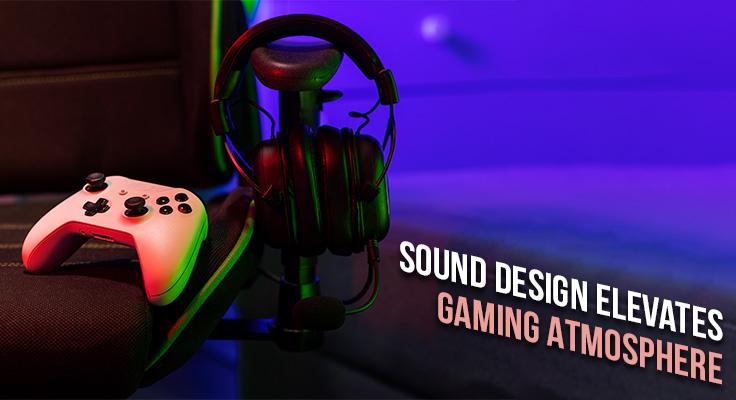The Role of Sound Design in Player Immersion
In today’s gaming world, visuals often steal the spotlight. However, an equally powerful element quietly works in the background to captivate players – sound design. This integral part of game development can dramatically enhance player immersion, making digital worlds feel alive and emotionally engaging. In this article, we’ll explore the vital role sound design plays in creating rich, immersive gaming experiences, discuss key benefits, practical tips, and spotlight case studies that showcase audio mastery in games.
What is Sound Design in Video Games?
Sound design refers to the art and practice of creating audio elements for video games, including sound effects, environmental ambience, voiceovers, and music. It’s more than just adding noise; sound design carefully crafts audio that responds dynamically to gameplay, setting tone and atmosphere while guiding player emotions and actions.
How Sound Design Boosts Player Immersion
Player immersion occurs when gamers feel truly “inside” the game world – detached from reality and fully engaged in the narrative and environment. Sound design is key to this, by:
- Enhancing Realism: Realistic footsteps, rustling leaves, or weather sounds replicate the physical world.
- Building Atmosphere: Layered background noises and ambient music establish mood and tension.
- Providing Feedback: Audio cues like weapon reload sounds or health alerts guide players without distracting them.
- Encouraging Emotional Connection: Music and voice acting deepen stories and character attachment.
- Increasing Spatial Awareness: 3D audio helps players locate objects and enemies using directional sound.
Benefits of Effective Sound Design in Games
| Benefit | Description | Impact on Player Experience |
|---|---|---|
| Heightened Immersion | Authentic soundscapes make worlds believable | Players feel fully engaged and lost in the game world |
| Emotional Engagement | Music and voice acting evoke feelings and moods | Increases player motivation to progress and explore |
| Improved Gameplay | Audio cues assist in tactical decisions and reactions | Gameplay feels more intuitive and satisfying |
| Accessibility | 3D audio and alerts aid players with visual impairments | Makes the game approachable for diverse player groups |
Practical Tips for Game Developers: Crafting Immersive Sound Design
Whether you’re an indie developer or part of a AAA studio, these best practices help maximize the impact of your game’s audio.
1. Start Early in Development
Integrate sound design from the beginning. This encourages better synergy between visuals, gameplay, and audio to create cohesive experiences.
2. Use Layered Ambient Sounds
Instead of a single looping background track, layer different subtle sounds like wind, chatter, or wildlife. This prevents audio fatigue and promotes authenticity.
3. Employ Dynamic and Adaptive Audio
Use game states or player actions to modulate sound intensity and composition, keeping the audio responsive to what’s happening onscreen.
4. Focus on Directional Audio
Implement 3D spatial sound techniques so players can judge location and movement through hearing, which is essential for immersion and gameplay.
5. Collaborate Closely with Other Teams
Work with designers and narrative teams frequently to ensure sound supports storytelling, gameplay tone, and player psychology effectively.
Case Studies: Sound Design Boosting Immersion in Popular Games
The Last of Us Part II
This critically acclaimed title showcases masterful sound design through its realistic environmental sounds and subtle audio cues. Footsteps, breathing, and distant wildlife sounds heighten tension and immersion, making players feel truly inside a post-apocalyptic world.
Hellblade: Senua’s Sacrifice
Hellblade uses binaural audio to immerse players in protagonist Senua’s psychosis. The 3D sound tells part of the story, making voice hallucinations and echoes not just effects but narrative devices.
DOOM Eternal
Fast-paced and intense, DOOM Eternal’s sound design delivers booming weapon shots, snarling demons, and adrenaline-pumping music. The sound perfectly complements the game’s pacing to keep players engaged and immersed.
First-Hand Experience: How Sound Changed Gameplay for Me
As a dedicated gamer, my experience with titles featuring rich sound design has been transformative. In stealth games, for instance, directional audio cues helped me anticipate enemy patrols without visual confirmation, making stealth gameplay more strategic and rewarding. Without such detailed sounds, these moments would feel more mechanical and less tense.
Moreover, atmospheric sounds in adventure games often evoked nostalgia and emotional depth, encouraging me to slow down and savor the environment – something visual effects alone couldn’t achieve.
Conclusion: Sound Design as a Pillar of Player Immersion
Sound design isn’t just background noise; it’s a powerful storytelling, gameplay, and emotional tool that anchors players to the game world. By integrating realistic soundscapes, dynamic audio, and purposeful sound cues, developers can significantly enhance player immersion and satisfaction.
Whether you’re a gamer appreciating the subtle crackle of a campfire or a developer crafting immersive experiences, understanding the role of sound design is essential. As technology continues to improve, the future of game audio promises to be even richer, drawing players deeper into the worlds they love to explore.











